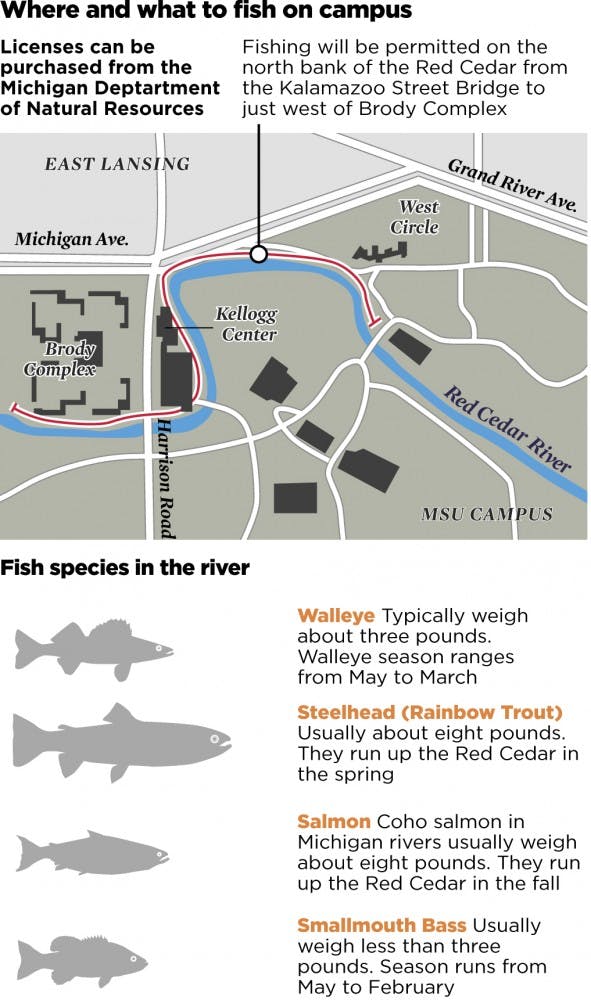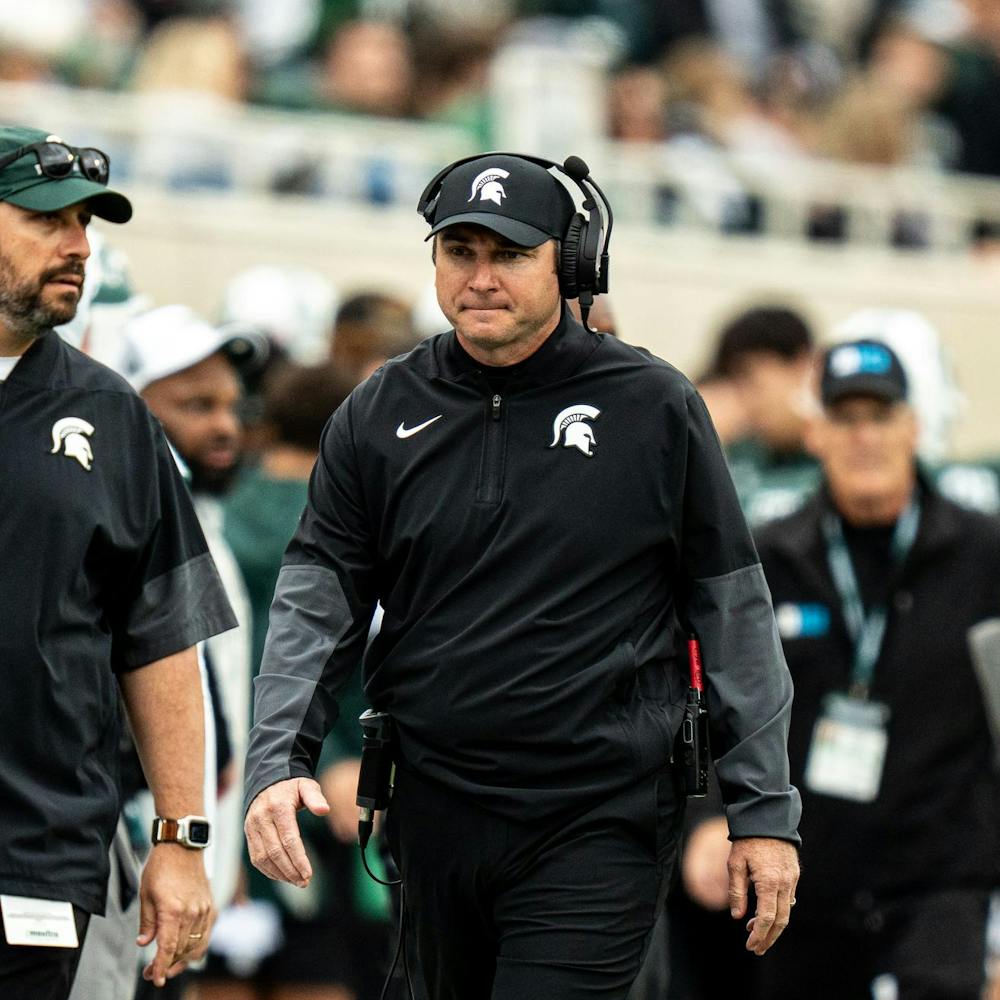Within the hidden woodlands of MSU’s campus lies a virtually untouched resource: fishing.
When the snow melts this spring, MSU students and community members finally will be able to let their fishing lines fly and cast away from the banks of the Red Cedar River— something the university had previously banned in a 1960s ordinance.
The change unanimously was supported by the Board of Trustees at its December 2012 meeting, going into effect immediately following its passage. The new guidelines will allow the public to fish within a designated area of the river on MSU’s campus for a three-year test period.
Fishing will be permitted on the north bank of the river between the western edge of Brody Complex and the bridge near the Spartan statue. The area is moderately wooded with some banks for fishermen to stand on.
“When I was a student, I fished on the Red Cedar all the time — fishing, feeding the ducks — that’s fun,” MSU Trustee George Perles said. “This is for the kids: that’s what the school’s all about.”
Fred Poston, the dean of the College of Agriculture and Natural Resources, was the administrator who spearheaded the effort to get the ordinance passed. Poston said whether or not to allow fishing on MSU’s campus was an ongoing debate for years.
Initially, Poston said, he was not on board with the idea for fear it might interfere with the student body’s enjoyment of the river. It wasn’t until he realized the designated portion was not being used that he changed his mind.
Despite the ordinance, Poston said technically, fishing always was allowed in the river, but entering and exiting the river to fish on MSU grounds was not permitted by the university.
“In the state of Michigan, the water is owned by the public of the state,” Poston said. “You can’t step out into private property or public property, (and) in this case, that is up to the trustees.”
Fisheries and wildlife professor Dan Hayes said he has identified between 30 to 35 different species of fish, including game fish such as smallmouth bass, walleye, steelhead trout and salmon. All of the fish are safe to eat.
Although the river has an unsanitary composition because of sewage seeping into it, Hayes said the these high bacteria levels do not have a detrimental effect on the fish. Hayes added that the fish in the river do not contain problematic levels of heavy metals such as arsenic and mercury — two factors experts consider when determining whether or not a fish is safe to consume.
Poston said fishing licensees are available to be purchased through the Michigan Department of Natural Resources, or DNR. The DNR will be monitoring the area and is in charge of enforcing fishing laws and ensuring the fishermen’s safety, he said.
Although Kirsten Johnson, the president of the Fisheries and Wildlife Club at MSU, was an avid fisher throughout her childhood, she said prior to coming to MSU, she was unaware of the health of the river and it’s ecosystem.
After learning about the river in her classes and hearing about the trustees’ most recent decision, Johnson, a fisheries and wildlife senior, said she is excited to grab her pole and head to the riverbank this spring.
“One of the biggest things on a student is that they can’t get too far from campus, and, for those who are really interested in fishing, this will allow them to do some sport fishing,” Johnson said.
“I think it will be widely utilized.”
Support student media!
Please consider donating to The State News and help fund the future of journalism.
Discussion
Share and discuss “Fishing now legal in the Red Cedar” on social media.







